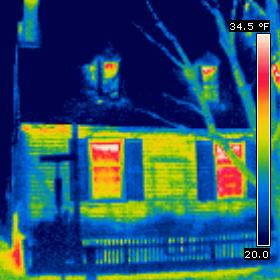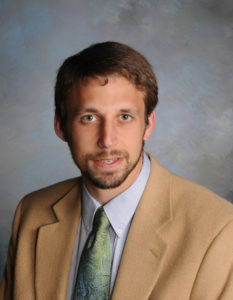If you step into Michael Spencer’s office in Combs, you’ll pass through a massive antique wooden doorframe. His mentor, Professor Emeritus Gary Stanton, salvaged it from Nottingham, an 18th-century plantation home that was recently destroyed.
Questions about what pieces of history should be saved and salvaged are what led Spencer ’03 to study at Mary Washington, one of only four institutions in the country with a bachelor’s degree in historic preservation. Now, as associate professor and department chair, Spencer and his fellow professors are opening doors to new conversations in the classroom about what is worthy of conservation and preservation in the 21st century.
“We’re moving beyond focusing on the history of a singular ethnic and gender group and broadening the spectrum in terms of what we should be looking at from a preservation standpoint,” said Spencer, who said the department frequently works with local African-American groups and Native American tribes to help address oversights of the past. “Now we are asking, ‘What story do we want to tell as a country?’”
The voices of preservationists like Spencer are becoming increasingly valuable as America – and our own historic city – navigates the debate over artifacts, relics and monuments from our nation’s past. From Confederate monuments in Charlottesville to the slave auction block in Fredericksburg, we have monumental decisions to make about what stays and what goes, and more importantly, why? It’s these questions that motivated Spencer to take part in Courageous Conversations, a new series of videos featuring UMW faculty exploring topics of diversity and inclusion.
Q: What drew you to the field of historic preservation in the first place?
A: I’ve always been interested in historic buildings, and most history programs are not building-centric. I found Mary Washington with my dad’s help – and the rest is history.
Q: How has the historic preservation department changed since you were a student?
A: We were doing ink on mylar drawings and had only just acquired AutoCAD, a computer-assisted drafting program. You had to sign up to use it on the computer in Trinkle’s basement. We still teach hard-line drawings, but now use new technologies such as 3-D modeling and virtual reality.
Q: Has preserving history always been a controversial topic, as it has been in the last few years, or is this a new phenomenon?
A: There will always be debates because every object and site is unique, so each brings different perspectives. It often becomes controversial when you talk about how to preserve things. As preservationists, we have seven aspects of integrity to help us decide if an object or site is significant, and location is one of them. If you move the block to the Fredericksburg Area Museum and have to pay to see it, is that conveying history in the way we want, or do we want it to be accessible to everyone? But there are also personal stories and conversations – feeling is another aspect of integrity we consider – and it might warrant a change in our preservation approach. As a department, we’ve participated in the discussions in Fredericksburg, but the community must delve into the actual preservation issues at hand, and we hope to be a part of that.
Q: What are your thoughts on the Confederate monuments at the center of the national controversy, particularly those in your hometown of Charlottesville?
A: Many of the monuments were put up at the 50th or 100th anniversary of the Civil War in honor of the Southern myth and “lost cause” and embody many of the racist beliefs of the time. Lee and Jackson didn’t have direct ties to Charlottesville. But some of the older memorials list names of the local dead and it’s harder to advocate for their removal. There are differences in how you approach and evaluate these monuments. But if you dig deep enough, you can always find out intent. Newspapers are always publishing editorials, and when you read them, you can really see what people wear on their sleeves.

Associate Professor Michael Spencer, who is chair of the Department of Historic Preservation, discovered the original door to the Mary Washington House using infrared thermography.
Q: What is the most rewarding part of your profession?
A: Seeing students with whom I’ve made a connection excel at UMW and beyond. I also find the “discovery” aspect of my job particularly rewarding. My wife was driving me around at 4 a.m., during one of the coldest days of the year, and we stopped at the Mary Washington House. I used infrared thermography tools, which show the way heat is transmitted through objects, and it led us to discover Mary Washington’s original front door.
Q: What is the most challenging?
A: Continually advocating for why historic preservation matters, here at UMW when it comes to securing resources, and within the community.
Q: What would people be most surprised to learn about you?
A: While I’m big on technology, I just got my first iPhone. Frankly, I hate using it, except when I’m taking pictures of my daughter.
